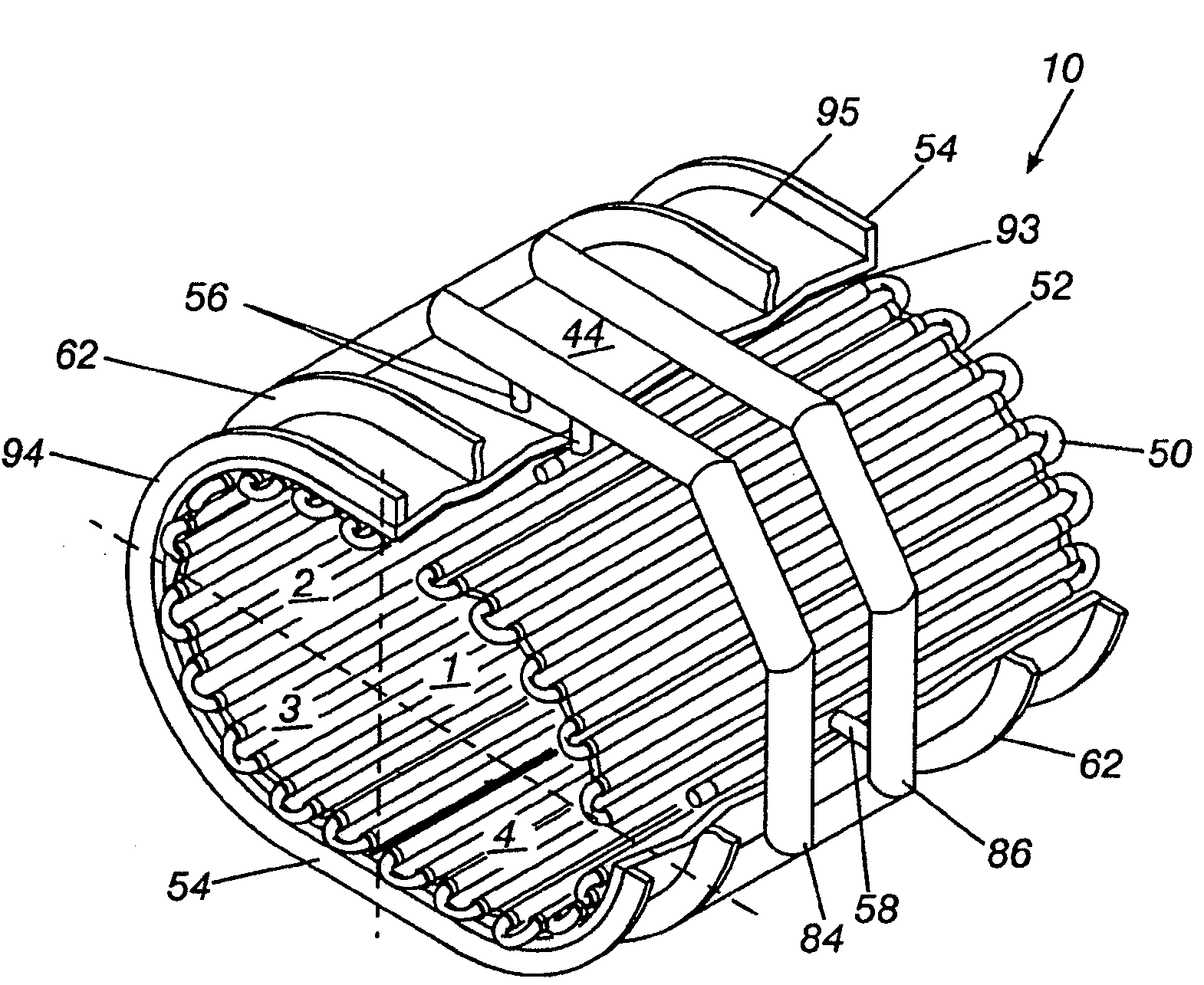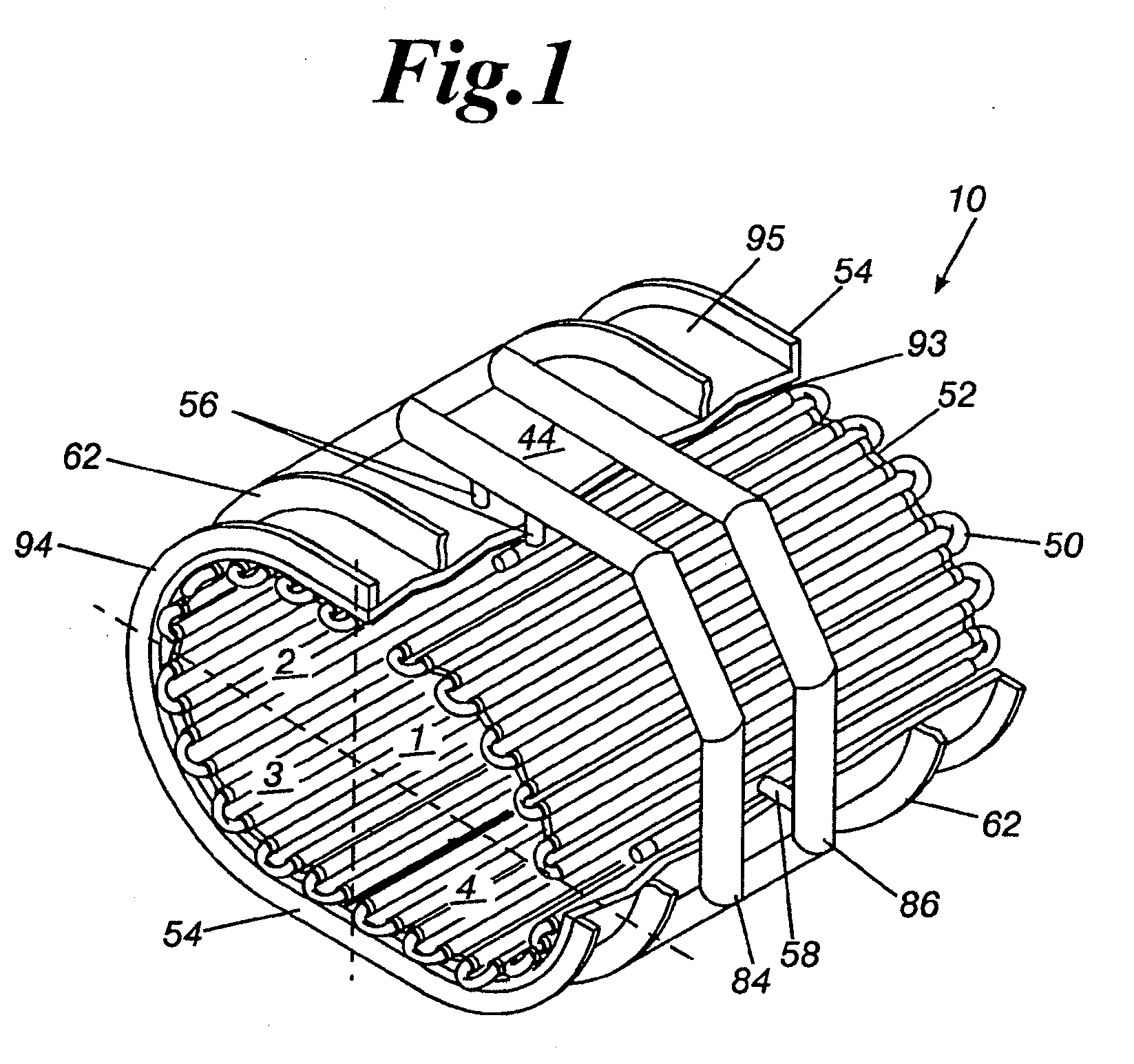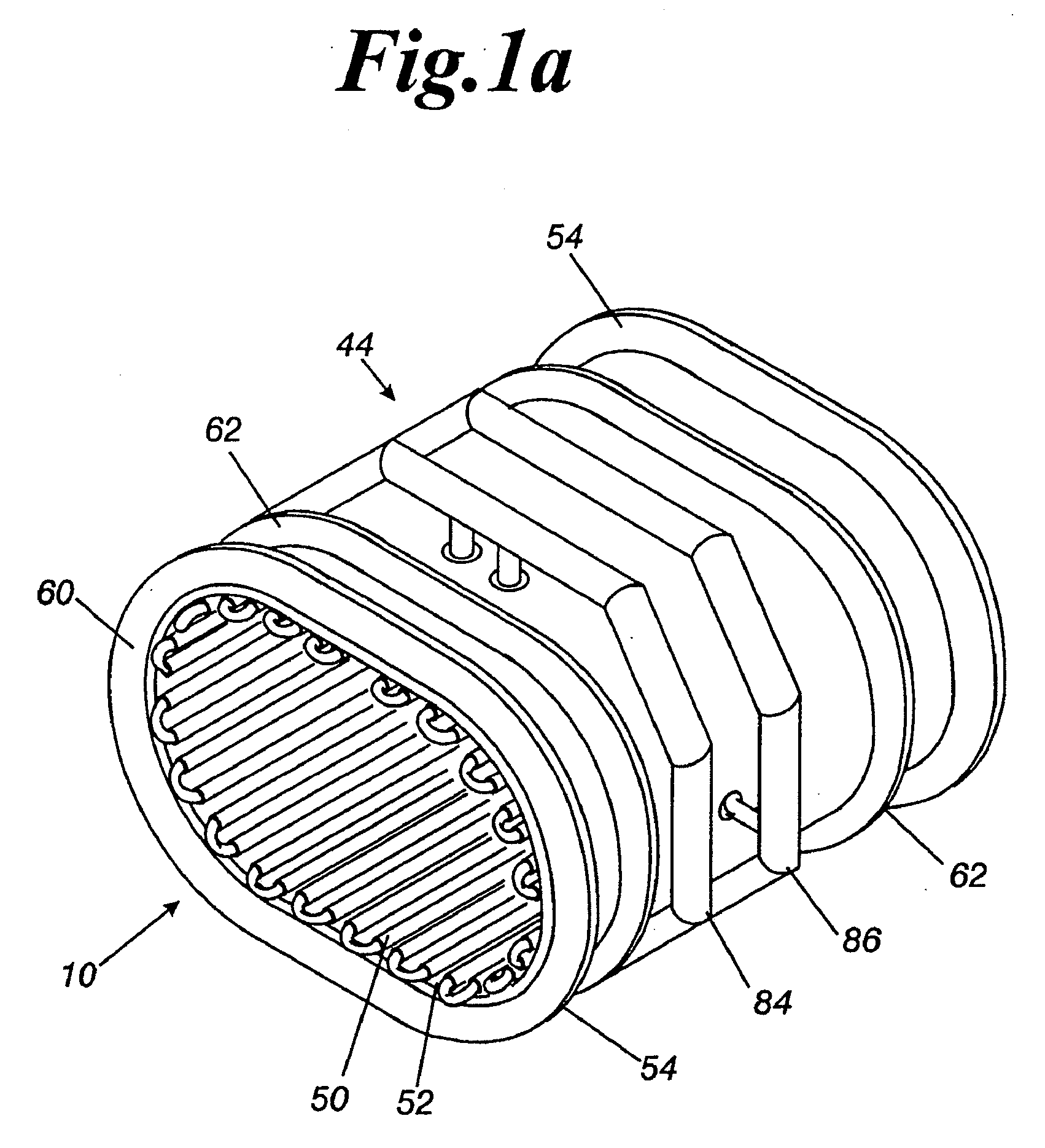Adjustable heat exchange apparatus and method of use
a heat exchange apparatus and adjustable technology, applied in the field of heat exchange devices, can solve the problems of affecting the operation of the eaf, and affecting the operation of the off-gas chamber, etc., and achieves the effects of reducing the operating life of the device, high mechanical wear, and high corrosion
- Summary
- Abstract
- Description
- Claims
- Application Information
AI Technical Summary
Benefits of technology
Problems solved by technology
Method used
Image
Examples
Embodiment Construction
[0053]For the purposes of promoting an understanding of the principles of the invention, reference will now be made to a number of illustrative embodiments illustrated in the drawings and specific language will be used to describe the same. It is to be understood that the disclosed embodiments are merely exemplary of the invention, which may be embodied in various forms. Therefore, specific structural and functional details disclosed herein are not to be interpreted as limiting.
[0054]Referring to FIG. 13, an illustrative heat exchange system 10 comprising an exemplary pipe 50 is depicted. The illustrative heat exchange system 10 comprises a pipe 50 having an inner material and an outer material. Illustratively, the inner material comprises an inner tube 150 and the outer material comprises an outer tube 250. The inner and outer tubes or portions 150, 250 have compositions or structures that illustratively differ in one or more respects from each other. For example, and without limit...
PUM
| Property | Measurement | Unit |
|---|---|---|
| temperatures | aaaaa | aaaaa |
| velocity | aaaaa | aaaaa |
| structure | aaaaa | aaaaa |
Abstract
Description
Claims
Application Information
 Login to View More
Login to View More - R&D
- Intellectual Property
- Life Sciences
- Materials
- Tech Scout
- Unparalleled Data Quality
- Higher Quality Content
- 60% Fewer Hallucinations
Browse by: Latest US Patents, China's latest patents, Technical Efficacy Thesaurus, Application Domain, Technology Topic, Popular Technical Reports.
© 2025 PatSnap. All rights reserved.Legal|Privacy policy|Modern Slavery Act Transparency Statement|Sitemap|About US| Contact US: help@patsnap.com



